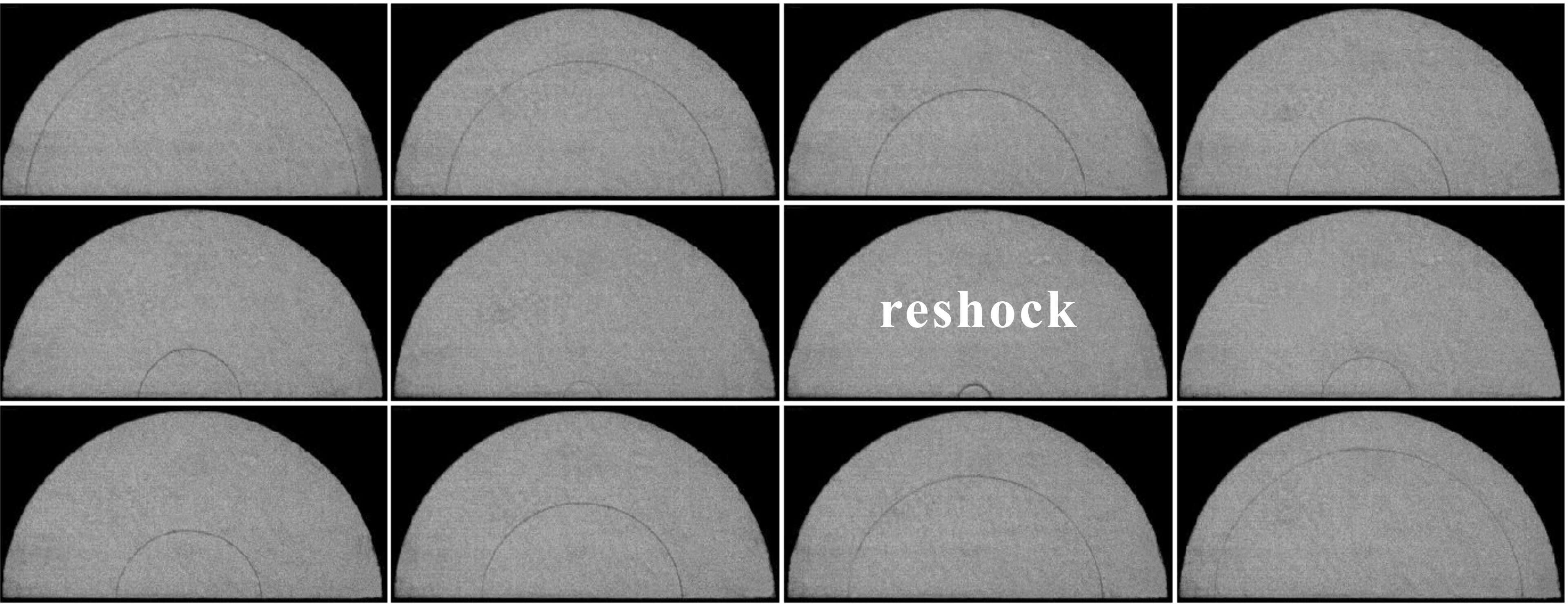Cylindrical converging shock waves are generated in a newly constructed semi-annular shock tube facility for performing experiments of the Richtmyer-Meshkov (RM) instability. The present design follows the principle of changing a planar shock into a cylindrical one in a horizontal shock tube similar to that of Perry and Kantrowitz, but the test section is cut to be half in comparison with the previous design. As shown in Fig. 1, the shock tube consists of a driver section, a driven section, an inlet pipe, a transformation section, a semi-annular channel and a semi-converging test section. The semi-annular channel has an inner radius of 85mm and an outer radius of 95mm. This self-strutted horizontal semi-annular configuration is able to generate converging shock waves without extra disturbances. More importantly, this shock tube structure provides great convenience for interface formation in study of the RM instability experiments.
In order to verify the feasibility and reliability of the semi-annular cylindrical converging shock tube, the pressure histories in the semi-annular channel and the test section are monitored. A high-speed camera combined with a schlieren imaging system is utilized to capture the complete process of the shock convergence and the shock divergence, as presented in Fig. 2. In this newly designed shock tube, gaseous interfaces with different shapes can be formed in the test section by the soap film technique, and both the shock propagation and interface evolution can be captured by the high-speed shlieren photography. The results indicate good performance of the shock facility and provide rich underlying physics of the converging shock-induced RM instability.

Figure 1 Drawing of cylindrical converging shock tube

Figure 2 Sequence of schlieren images showing the propagation of shock waves in observing region

